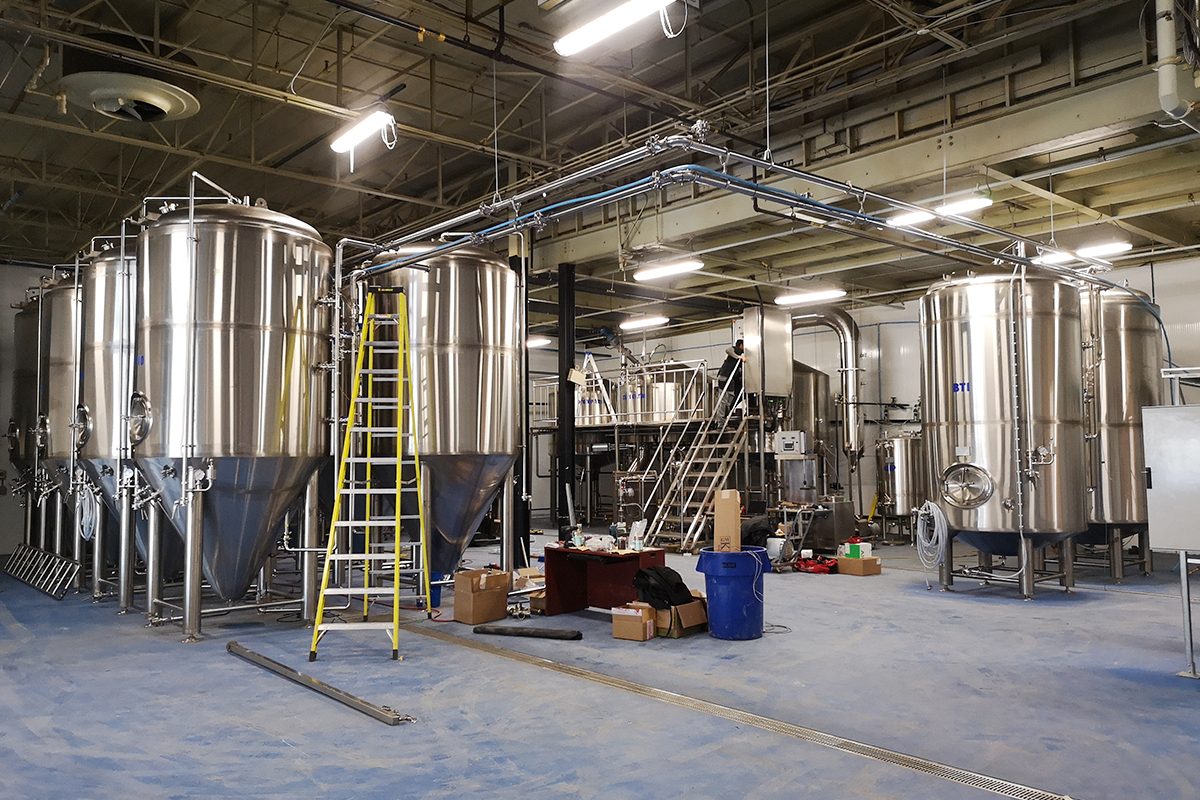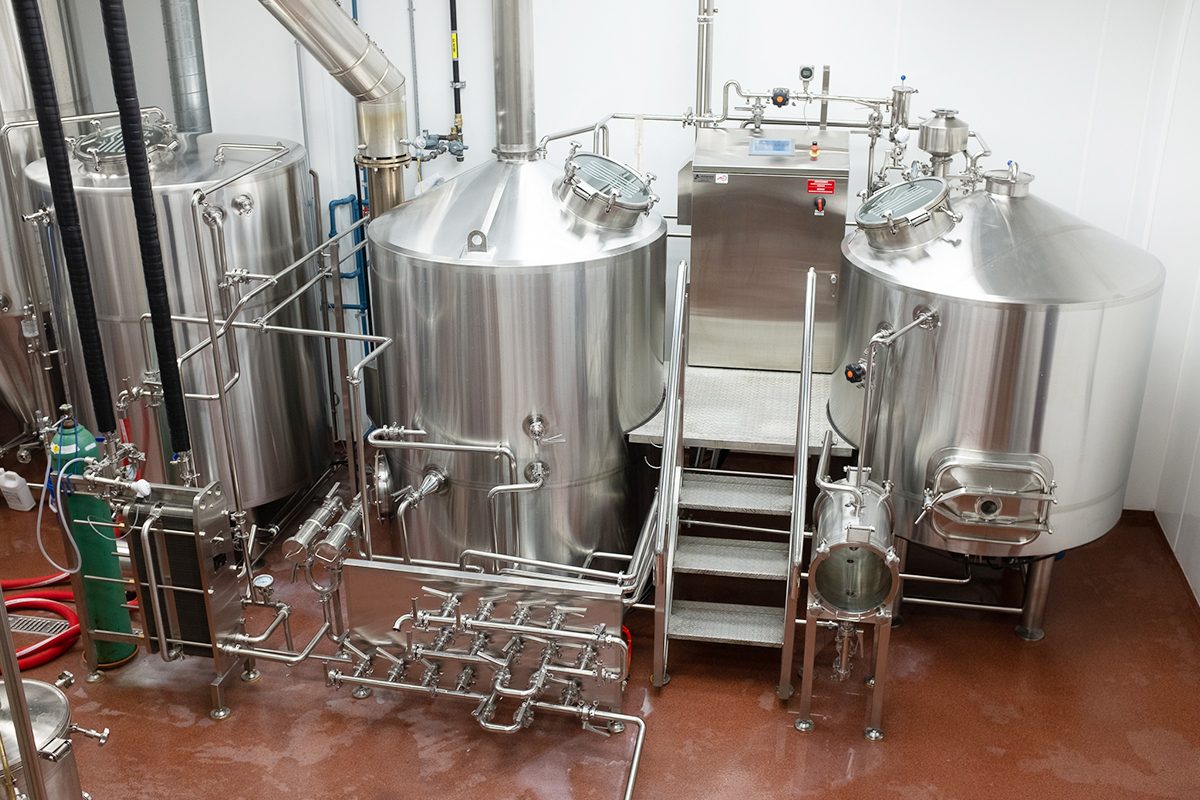
How To Choose The Right Brewhouse Equipment?
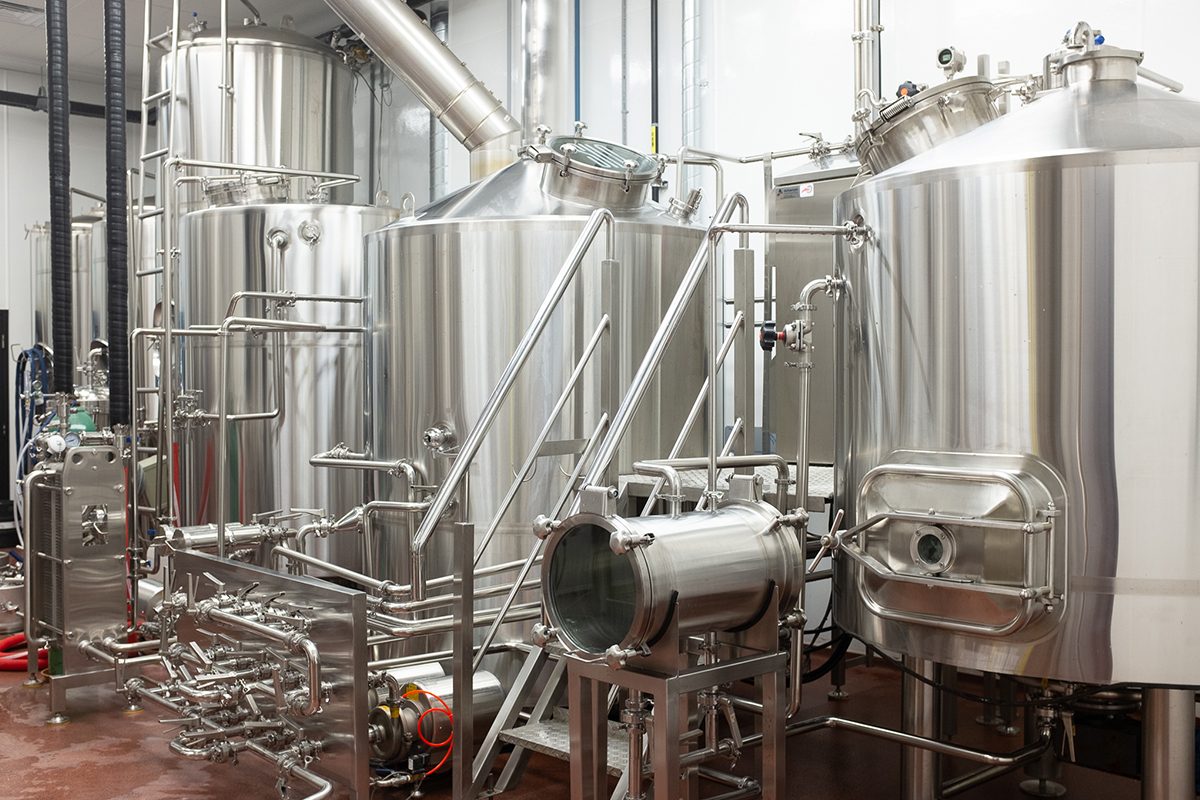
Understanding Brewhouse Equipment Components
Mash Tun
The Mash Tun is where the brewing process begins by mixing crushed malt (grains) with hot water to extract fermentable sugars—a process known as mashing.
- Function: Converts starches from malt into sugars that yeast will later ferment.
- Features to Consider: Insulation for temperature retention, stirring mechanisms (agitators) for even mixing, and heating options (steam or electric).
- Key Considerations: Proper temperature control ensures the correct sugar content. Look for an easy-to-clean design with access points for thorough maintenance.
Lauter Tun
After mashing, the mixture, known as mash, is transferred to the Lauter Tun to separate the liquid wort from the spent grains.
- Function: Filters and separates the wort from the grain solids.
- Features to Consider: False bottoms or slotted plates to prevent clogging, rakes to stir and break up the grain bed, and efficient drainage systems for faster wort collection.
- Key Considerations: The Lauter Tun should be large enough to handle the volume from the Mash Tun, and smooth wort collection ensures higher yield and clarity.
Brew Kettle
The Brew Kettle is where the wort is boiled, often with hops, to sterilize it and extract flavors.
- Function: Boils the wort to kill unwanted microbes and release bitterness and aroma from the hops.
- Features to Consider: Steam, gas, or electric heating options, insulation for energy efficiency, and precise temperature control to prevent boil-overs.
- Key Considerations: The size of the kettle should align with your batch size, and an integrated steam vent is necessary to release excess vapor.
Whirlpool
After boiling, the wort is transferred to the Whirlpool to remove solid particles, including hop residues and trub (protein deposits). This step is critical for producing clear wort before fermentation.
- Function: Uses centrifugal force to separate solids from the liquid wort.
- Features to Consider: A tangential inlet to create a vortex, smooth interior surfaces to prevent particle build-up, and an outlet positioned to draw clear wort.
- Key Considerations: Efficient separation reduces trub carry-over, which can affect the beer’s taste and clarity.
Hot Liquor Tank (HLT)
The Hot Liquor Tank stores heated water, known as hot liquor, used for mashing, sparging (rinsing the grains during lautering), and cleaning equipment.
- Function: Provides a steady supply of hot water throughout the brewing process.
- Features to Consider: High-efficiency insulation to maintain temperature, multiple heating options (electric or steam), and easy-to-read water level indicators.
- Key Considerations: An appropriately sized HLT ensures there is enough hot water for brewing and cleaning operations without delays.
Cold Liquor Tank (CLT)
The Cold Liquor Tank holds chilled water, or cold liquor, used to cool the wort rapidly after boiling. Quick cooling is essential to prepare the wort for fermentation and prevent contamination.
- Function: Supplies cold water for heat exchange to lower the wort temperature before it enters the fermenter.
- Features to Consider: Insulation to maintain water temperature, a glycol cooling system for added efficiency, and integration with heat exchangers.
- Key Considerations: Rapid wort cooling preserves the beer’s aroma and flavor profile while minimizing the risk of bacterial contamination.
How These Components Work Together
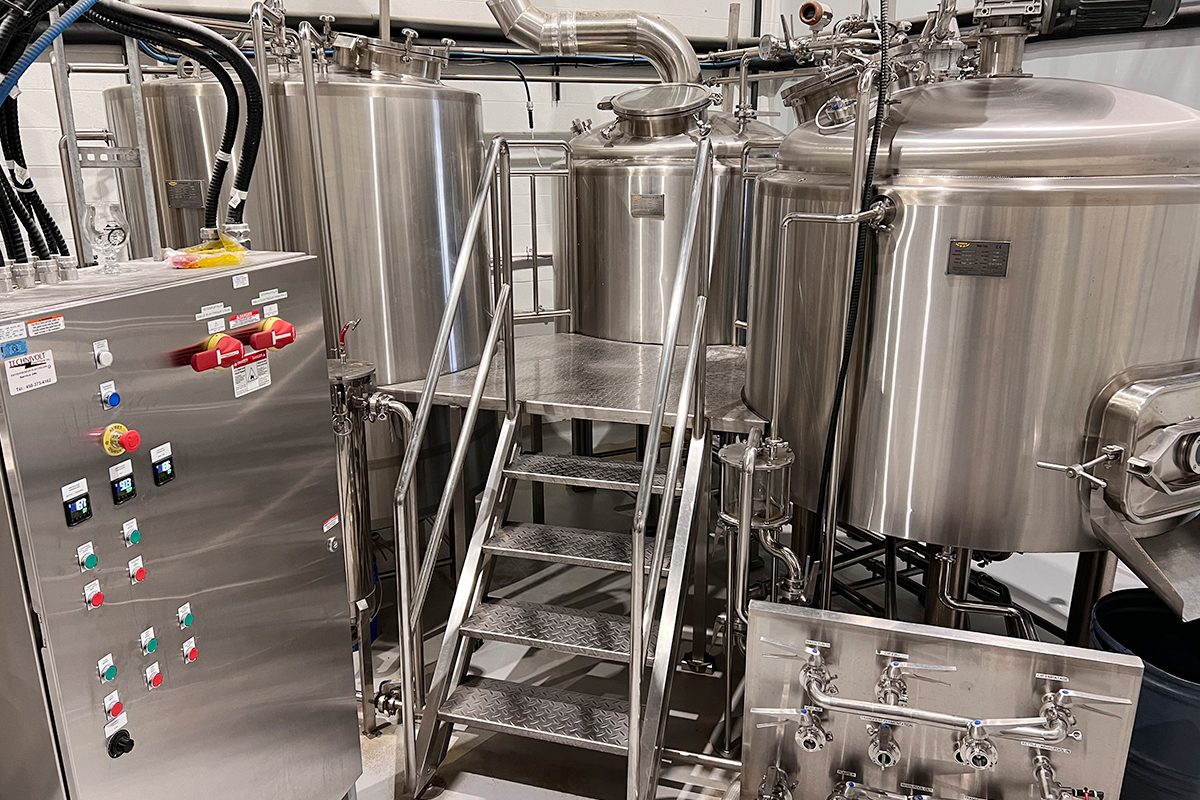
How to Determine the Right Equipment Size and Capacity
Batch Size Requirements
The batch size refers to the amount of beer you aim to produce in a single brewing cycle. Determining your ideal batch size depends on several factors, including the scale of your brewery, market demand, and product diversity.
- Microbreweries and Start-Ups: Smaller systems (3-5 barrels) are ideal for new breweries testing their recipes or targeting niche markets. They offer flexibility and require a smaller initial investment.
- Mid-Sized Breweries: If your focus is on consistent production for local distribution, 10-15 barrel systems provide a balance between cost and capacity.
- Large-Scale Breweries: For breweries producing at an industrial scale, systems of 30 barrels or more ensure high output. Larger brewhouses minimize per-batch operating costs, but they require a significant initial investment.
Key Considerations:
- Choose equipment with capacity slightly above your projected needs to avoid underutilization or overcapacity.
- Align batch size with your storage and packaging capacities to avoid bottlenecks downstream.
- If producing a variety of beer styles, ensure the system can handle different batch sizes without compromising efficiency.
Future Expansion Plans
Planning for future growth ensures that your brewery can scale production without requiring a complete equipment overhaul. Modular and expandable brewhouse systems can accommodate increased demand over time.
- Modular Designs: Systems with modular components allow you to add additional tanks or vessels as needed, such as upgrading from a two-vessel to a four-vessel brewhouse.
- Pre-Planning Utilities and Space: Ensure your facility layout can accommodate future tanks or fermenters. Pre-installing utilities like water, steam, and electricity connections save time and reduce costs during expansion.
- Investment in Scalable Equipment: Selecting brewhouse equipment with automation or control system upgrades allows seamless integration of new components as your operation grows.
Key Considerations:
- Assess the market trends and growth potential to forecast your brewery’s expansion needs.
- Work with leading equipment suppliers to customize systems that support phased growth.
- Consider leasing or financing options to manage upfront costs while planning for future upgrades.
Turnaround Time
Turnaround time refers to how quickly you can complete one batch and start the next. Reducing downtime between batches is essential for maximizing production and improving profitability.
- Efficient Cleaning and Setup Times: Look for equipment with CIP (Clean-in-Place) systems to minimize cleaning time between batches. Easy access for maintenance and automated controls also speed up turnaround.
- Parallel Batch Processes: Multi-vessel systems allow different brewing stages to occur simultaneously. For example, mashing in one vessel while another batch boils improves efficiency and shortens turnaround time.
- Optimizing Hot and Cold Liquor Availability: Proper sizing of Hot and Cold Liquor Tanks ensures sufficient water supply for back-to-back batches. Delays in heating or cooling water can slow down the brewing cycle.
Key Considerations:
- Evaluate how long each stage—mashing, lautering, boiling, and cooling—takes to identify bottlenecks.
- Systems with integrated automation improve batch consistency and reduce downtime.
- Plan for seasonal demand fluctuations, ensuring your equipment can handle peak production periods efficiently.
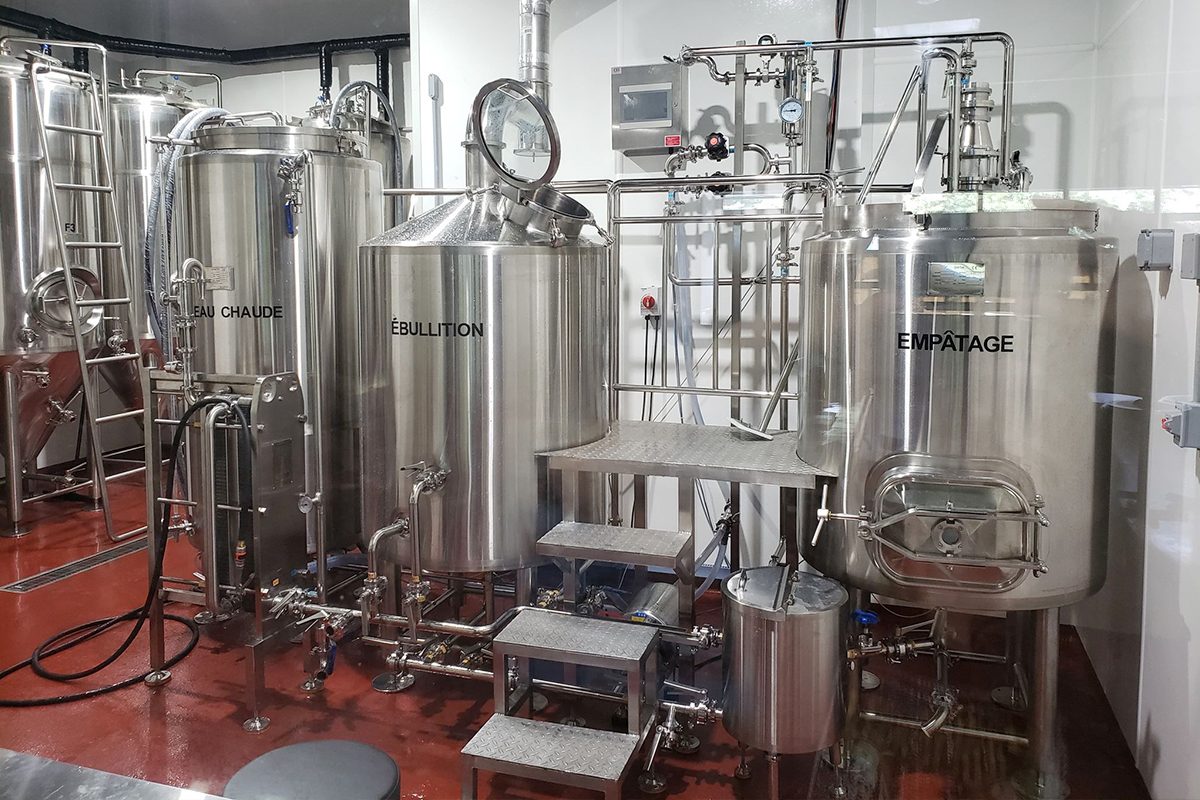
Material Selection
Stainless Steel
Advantages:
- Durability and Strength: Stainless steel resists dents, scratches, and corrosion, making it ideal for long-term use in high-volume production.
- Easy to Clean: Its non-porous surface ensures effective cleaning, preventing contamination and bacterial growth.
- Sanitation-Friendly: Stainless steel equipment is compatible with CIP (Clean-in-Place) systems, reducing cleaning time between batches.
- Chemical Resistance: It withstands contact with caustic cleaning agents and acidic ingredients used in the brewing process.
Applications in Brewing:
- Mash Tun and Lauter Tun: Stainless steel maintains stable temperatures and resists the acidic environment created during mashing.
- Brew Kettle and Whirlpool: With excellent heat retention, stainless steel ensures even boiling and supports easy integration with steam or electric heating systems.
- Hot and Cold Liquor Tanks: Stainless steel’s insulation capabilities help maintain stable water temperatures for brewing and cooling processes.
Key Considerations:
- Cost-Effective: While stainless steel may have a higher initial cost compared to other materials, its durability ensures a lower total cost of ownership over time.
- Grades of Stainless Steel: Common grades used in brewing include 304 (for most vessels) and 316 (for components exposed to more aggressive chemicals, such as cleaning agents).
Copper
Advantages:
- Excellent Thermal Conductivity: Copper heats evenly and quickly, making it ideal for brewing processes requiring precise temperature control.
- Aesthetic Appeal: The warm, reddish tone of copper gives the equipment a visually appealing, traditional look, often favored in artisanal or display breweries.
- Trace Element Benefits: Small amounts of copper can remove unwanted sulfur compounds during brewing, enhancing the final beer flavor.
Applications in Brewing:
- Brew Kettle: Copper brew kettles are valued for their excellent heat transfer, reducing the time needed to reach a boil.
- Specialty Equipment: Copper is sometimes used in custom brewery setups where aesthetics play a significant role in branding or customer experience.
Key Considerations:
- Maintenance Requirements: Copper tarnishes easily and requires regular cleaning and polishing to maintain its appearance and performance.
- Cost and Availability: Copper is generally more expensive than stainless steel, and its use is becoming less common due to higher maintenance and material costs.
- Compatibility Issues: Copper is reactive with certain acids and cleaning agents, making it less practical for some modern brewing processes.
Choosing the Right Material for Your Brewhouse
The decision between stainless steel and copper comes down to functionality, aesthetics, and budget.
- For Practical and Efficient Production: Stainless steel is the ideal choice for most breweries, thanks to its durability, ease of maintenance, and compatibility with automation systems.
- For Traditional or Display Breweries: Copper can enhance the visual appeal of the brewhouse, creating a distinctive, artisanal atmosphere that resonates with customers.
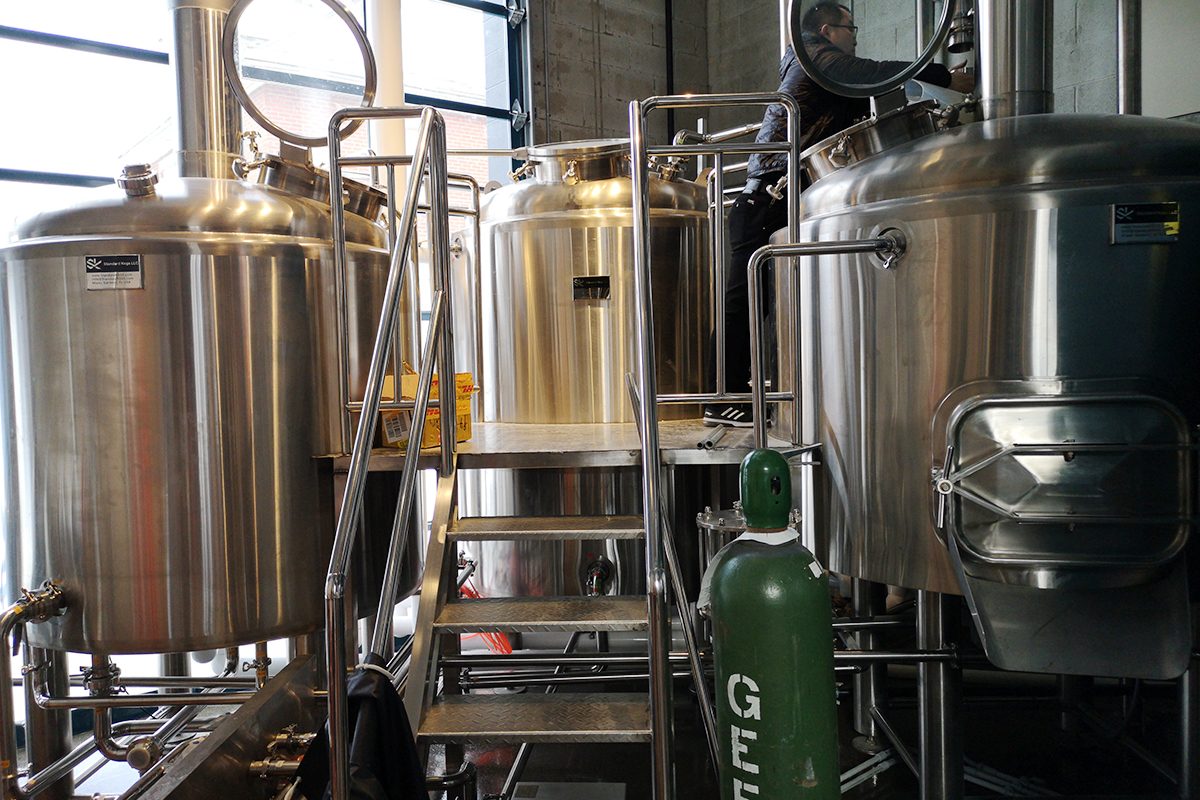
Heating Options
Steam Heating
Advantages:
- Even Heat Distribution: Steam jackets prevent hot spots, reducing the risk of scorching the wort.
- Temperature Precision: Steam allows for tight temperature control, essential for mashing and boiling.
- Scalable for Larger Systems: Ideal for high-volume production, as it provides consistent heating across large vessels.
- Multi-Vessel Integration: One boiler can heat multiple tanks simultaneously, improving efficiency.
Key Considerations:
- High Initial Cost: Steam systems require investment in a boiler, steam pipes, and insulation.
- Maintenance Requirements: Boilers need regular servicing, which can increase maintenance costs.
- Space and Safety: Requires additional space for the boiler and compliance with safety regulations for high-pressure steam systems.
Direct Fire Heating
Advantages:
- Lower Initial Cost: No need for a boiler or complex piping, reducing upfront investment.
- Simpler Setup: Ideal for small-scale breweries and start-ups due to ease of installation and maintenance.
- Rapid Heat Generation: Direct contact with the vessel results in fast heating.
Key Considerations:
- Uneven Heat Distribution: The risk of hot spots can lead to wort scorching or inconsistent mashing.
- Limited Scalability: Less practical for large production volumes due to uneven heating across large vessels.
- Ventilation Requirements: Gas burners require proper ventilation to manage emissions and heat buildup.
Electric Heating
Advantages:
- Precise Control: Electric heating elements provide accurate temperature adjustments, ideal for step mashing.
- Energy Efficiency: No heat loss through piping, as energy is directly applied to the vessel.
- Clean Energy Option: Environmentally friendly, especially when powered by renewable energy sources.
- Lower Maintenance: No need for boilers or gas lines, reducing maintenance requirements.
Key Considerations:
- Higher Operating Costs: Electricity can be more expensive than gas for high-volume production.
- Scaling Limitations: Less efficient for large brewhouses, as multiple elements may be required.
- Compatibility: Not all brewing vessels are designed for electric heating, so equipment must be carefully selected.
Choosing the Right Heating Option for Your Brewery
The choice of heating system depends on your brewery’s size, budget, production goals, and energy considerations.
- Steam Heating: Best suited for large-scale production due to its efficiency and scalability. However, it requires a higher initial investment and ongoing maintenance.
- Direct Fire: Ideal for smaller breweries looking for a low-cost, straightforward setup. However, uneven heating makes it less suitable for complex brewing processes or larger operations.
- Electric Heating: A great option for small to mid-sized breweries focused on precision and sustainability. It provides excellent control but may not be cost-effective for high-volume production.
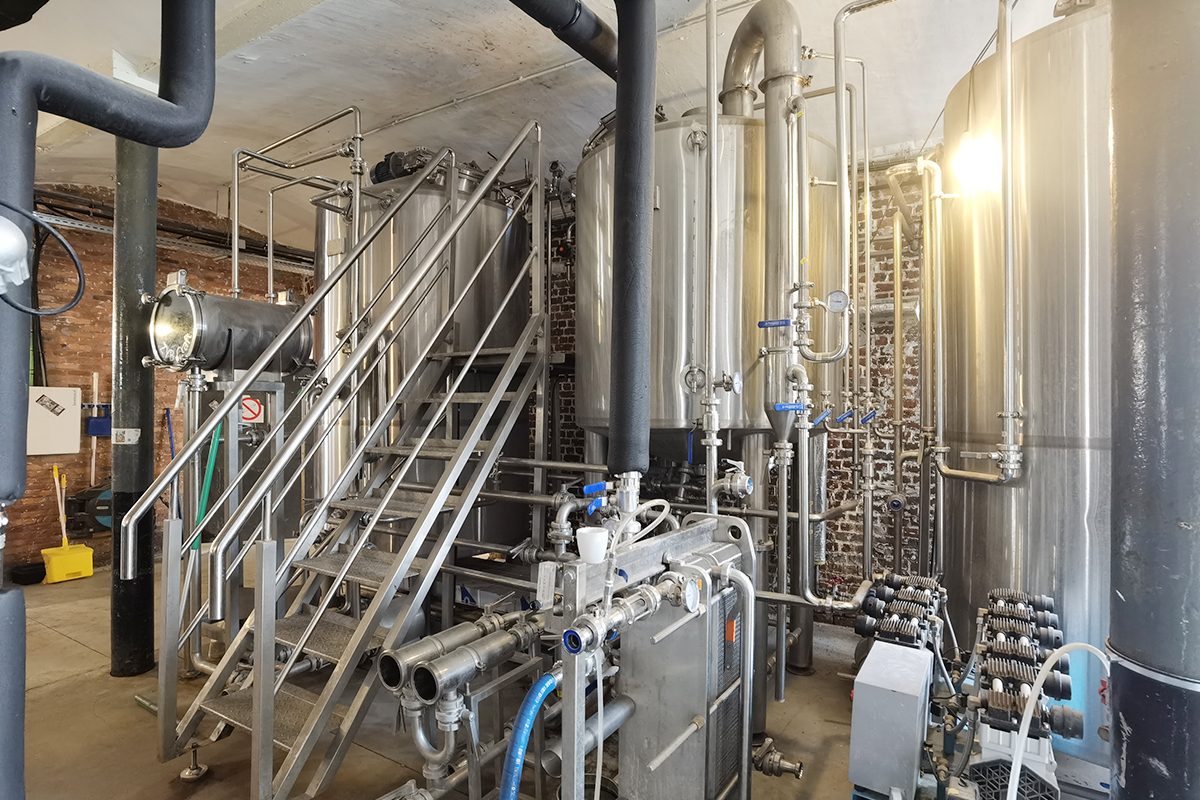
Automation and Control Systems for Efficient Operation
Automated Temperature Control
Benefits:
- Consistency: Automated systems ensure the mash, boil, and cooling processes are kept within target temperature ranges, minimizing deviations.
- Energy Efficiency: Temperature control systems optimize heating and cooling, reducing energy consumption.
- Reduced Labor: Eliminates the need for manual temperature monitoring, freeing up operators to focus on other tasks.
Features to Consider:
- Temperature Probes and Sensors: Ensure accurate readings throughout the process.
- Control Software Integration: Automation systems can be connected to central control units for remote monitoring.
- Alarms and Alerts: Notify brewers in case of temperature deviations, enabling quick corrective actions.
Impact on Operations:
- Automated temperature control ensures optimal enzyme activity during mashing, precise boiling to extract hop flavors and rapid wort cooling—critical for producing consistent, high-quality beer.
Automated Raking Systems
Benefits:
- Increased Efficiency: Rakes maintain a consistent grain bed and prevent channeling, ensuring high extraction efficiency.
- Reduced Labor: Automation eliminates the need for manual stirring and monitoring, saving time and effort.
- Precise Control: Programmable rakes allow brewers to adjust speed and timing based on the type of grain or desired extraction yield.
Features to Consider:
- Adjustable Speed and Height Settings: Customize the rake movements for different grain bills.
- Automation with Recipe Integration: Systems that follow preset recipes ensure consistency across batches.
- Reverse Functionality: Enables more thorough grain bed agitation and easier cleanup after lautering.
Impact on Operations:
- Automated raking ensures smooth lautering by optimizing the flow of wort through the grain bed, improving both speed and extraction efficiency, and reducing downtime between batches.
Data Logging for Process Optimization
Benefits:
- Traceability: Complete records of temperature, pH levels, and other brewing parameters allow for consistent reproduction of batches.
- Process Optimization: Analyzing data helps identify bottlenecks, inefficiencies, or deviations, enabling continuous improvement.
- Regulatory Compliance: Data logs provide documentation required for food safety audits and certifications.
Features to Consider:
- Cloud-Based Storage: Access brewing data from anywhere for remote monitoring and collaboration.
- Custom Reports and Analysis Tools: Generate detailed reports to track performance trends and optimize recipes.
- Integration with Control Systems: Seamless data flow between automation systems and logging platforms ensures real-time accuracy.
Impact on Operations:
- Data logging transforms your brewery into a data-driven operation. It provides the insights necessary for improving efficiency, maintaining product consistency, and scaling production.
Choosing the Right Automation and Control Systems
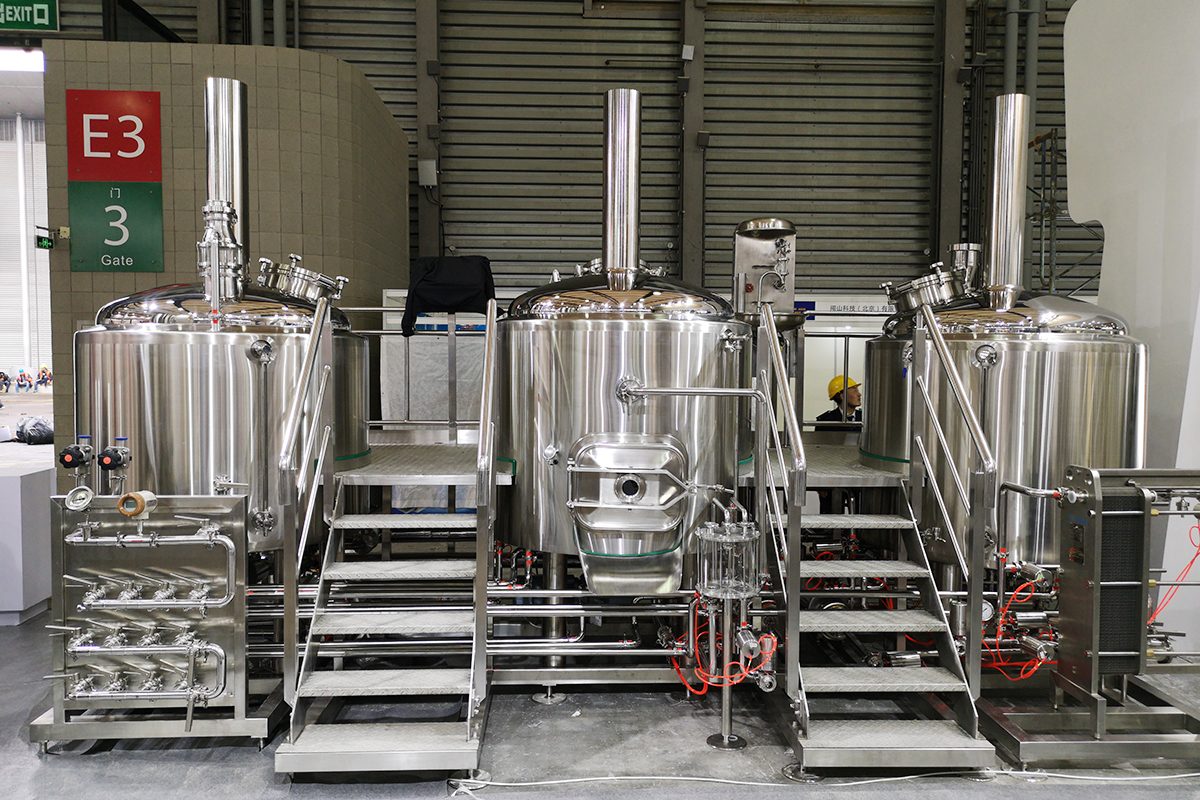
Cooling Systems
Flow Rate
Importance in Brewing:
- Rapid cooling after boiling reduces the risk of bacterial contamination.
- Precise temperature control during fermentation ensures healthy yeast activity.
Key Considerations:
- Matching Capacity: The cooling system’s flow rate should match your production volume to avoid bottlenecks during wort cooling.
- Heat Exchanger Efficiency: Plate or tube heat exchangers with high flow rates allow faster cooling without compromising temperature consistency.
- Adjustable Flow Settings: Systems with variable flow controls ensure precision across different batch sizes.
Impact on Operations:
- Properly optimized flow rates ensure efficient wort cooling and fermentation temperature management, enabling faster turnaround times between batches.
Energy Efficiency
Advantages:
- Lower Operational Costs: Energy-efficient systems reduce electricity consumption, improving profitability.
- Sustainability: Brewers can reduce their carbon footprint by using cooling systems powered by renewable energy sources or equipped with energy-saving technologies.
- Improved Performance: Modern systems with advanced insulation and precision controls prevent unnecessary cooling loss.
Key Considerations:
- Glycol Cooling Systems: These are highly efficient for fermentation temperature control, as they provide consistent cooling without large energy spikes.
- Insulated Piping and Vessels: Proper insulation reduces heat gain, conserving energy during cooling operations.
- Variable Frequency Drives (VFDs): VFDs adjust motor speeds to optimize energy consumption based on cooling demand.
Impact on Operations:
- An energy-efficient cooling system ensures reliable performance while keeping utility costs under control, contributing to the long-term profitability of the brewery.
Backup Cooling Options
Advantages of Backup Systems:
- Risk Mitigation: Reduces the risk of product loss due to cooling failure during critical brewing stages.
- Operational Continuity: Ensures fermentation and storage temperatures remain stable even during emergencies.
- Reduces Downtime: Prevents disruptions that could affect brewing schedules and production targets.
Backup Options to Consider:
- Redundant Chiller Units: Secondary chillers can activate automatically if the primary unit fails.
- Emergency Glycol Reserve: Reserve tanks ensure glycol availability during unplanned outages.
- Generator-Powered Cooling Systems: Backup generators keep cooling systems operational during power failures.
Impact on Operations:
- Backup cooling systems provide peace of mind, ensuring that temperature-sensitive processes like fermentation and storage remain unaffected, safeguarding product quality and minimizing downtime.
Choosing the Right Cooling System
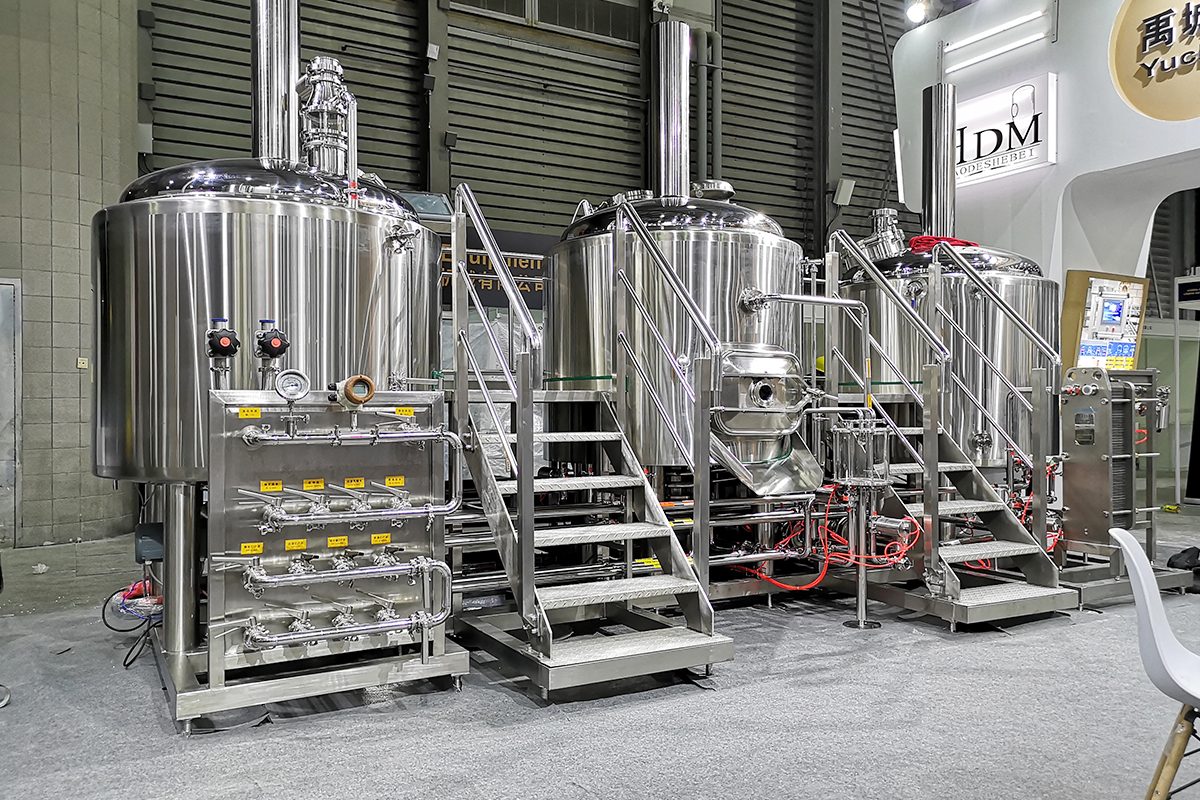
Maintenance and Cleaning Requirements
Easy Access Points
Importance:
- Simplifies inspection for early detection of wear or malfunction.
- Reduces cleaning time by allowing access to all areas of the equipment.
- Ensures compliance with sanitation standards by facilitating thorough cleaning.
Key Features:
- Manways and Hatches: Large openings for quick internal inspections and manual cleaning of tanks.
- Removable Components: Parts like valves and gaskets that can be easily detached for cleaning or replacement.
- Sight Glasses and Ports: Allow operators to monitor processes and identify issues without dismantling equipment.
Impact on Operations:
- Easy access points reduce downtime by making cleaning and maintenance faster and more efficient, minimizing disruptions in production.
CIP Systems
Importance:
- Ensures thorough cleaning of all internal surfaces, reducing contamination risks.
- Automates repetitive cleaning tasks, freeing up labor for other critical operations.
- Reduces water and chemical usage, contributing to sustainability goals.
Key Features:
- Spray Balls or Rotating Jets: Provide 360-degree coverage to clean every part of the tank interior.
- Automated Timers and Sensors: Ensure cleaning cycles are completed accurately and efficiently.
- Chemical Dosing Systems: Automatically mix and dispense cleaning agents in precise quantities for effective sanitation.
Impact on Operations:
- CIP systems improve efficiency by reducing cleaning times, lowering labor costs, and ensuring that all brewing equipment remains hygienic between batches.
Durable Components
Importance:
- Reduces maintenance costs by minimizing wear and tear.
- Improves operational reliability, reducing the risk of unexpected equipment failures.
- Increases the lifespan of equipment, ensuring a better return on investment.
Key Features:
- Stainless Steel Construction: Resistant to corrosion, easy to clean, and durable under high temperatures.
- Heavy-Duty Valves and Seals: Designed to withstand frequent use and high pressure.
- Reinforced Agitators and Motors: Ensure continuous operation without the risk of burnout or failure.
Impact on Operations:
- Durable components ensure reliable performance, reducing the frequency of repairs and replacements and lowering total maintenance costs over time.
Choosing the Right Maintenance and Cleaning Features for Your Brewhouse Equipment
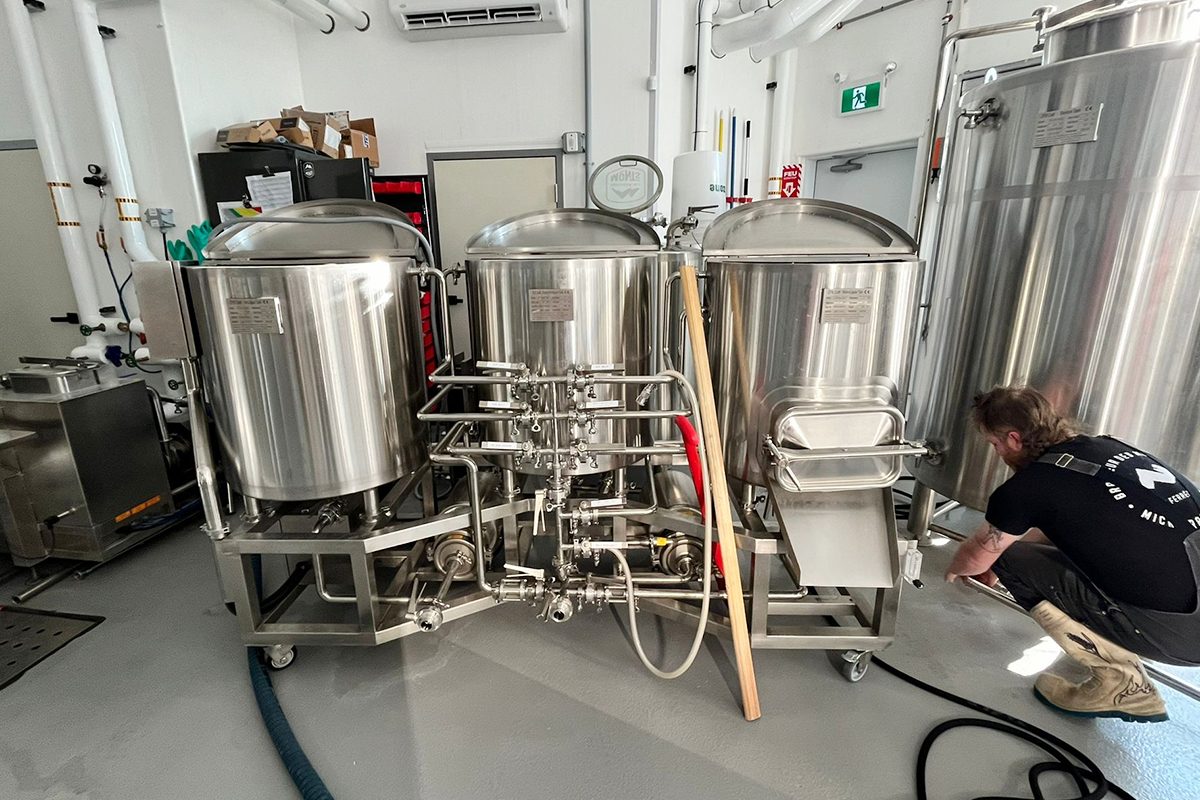
Customization and Scalability Options
Modular Designs
Advantages:
- Scalability: Additional tanks, kettles, or fermenters can be added to increase capacity.
- Flexible Layout: Equipment can be reconfigured to optimize space as production grows.
- Phased Investment: Breweries can start with a smaller system and scale up over time, reducing initial investment costs.
Key Features:
- Expandable Piping and Utilities: Designed for seamless connection with future equipment.
- Interchangeable Vessels: Multi-purpose vessels (e.g., combined mash/lauter tun) allow breweries to adapt to changing production volumes.
- Standardized Fittings: Ensures compatibility with new components as they are added.
Impact on Operations:
- Modular systems provide the flexibility to grow at your own pace, enabling breweries to expand production or introduce new products without costly downtime or rework.
Custom Controls and Software
Advantages:
- Precision Control: Customizable software ensures exact control over mashing, boiling, and fermentation processes.
- User-Friendly Interfaces: Touchscreen panels and intuitive dashboards improve usability for brewery staff.
- Remote Monitoring: Software with IoT (Internet of Things) connectivity allows brewers to oversee operations from anywhere, reducing downtime.
Key Features:
- Recipe Management Systems: Store and replicate recipes for consistent production.
- Batch Tracking and Reporting: Provides detailed production insights and ensures compliance with regulations.
- Automation Integration: Connects seamlessly with automated raking, temperature control, and CIP systems for efficient operation.
Impact on Operations:
- Customized control systems enhance efficiency by automating processes, providing real-time insights, and enabling precise replication of brewing recipes.
Specialized Equipment
Examples of Specialized Equipment:
- Rotating Whirlpool Tanks: Improve wort clarity by enhancing the separation of solids from the liquid.
- High-Efficiency Heat Exchangers: Optimize energy use during wort cooling to reduce operational costs.
- Dedicated Hop Back Units: Enhance hop aroma by allowing fresh hops to steep in the hot wort before cooling.
Advantages:
- Optimized Production: Specialized equipment ensures precise control over certain aspects of brewing, such as hop extraction or fermentation temperature.
- Product Innovation: Enables the creation of unique beers with distinctive flavors and characteristics.
- Competitive Edge: Custom equipment can help breweries differentiate their products in a crowded market.
Impact on Operations:
- Specialized equipment allows breweries to innovate and optimize specific brewing processes, enhancing the final product’s quality and uniqueness.
Choosing the Right Customization and Scalability Options
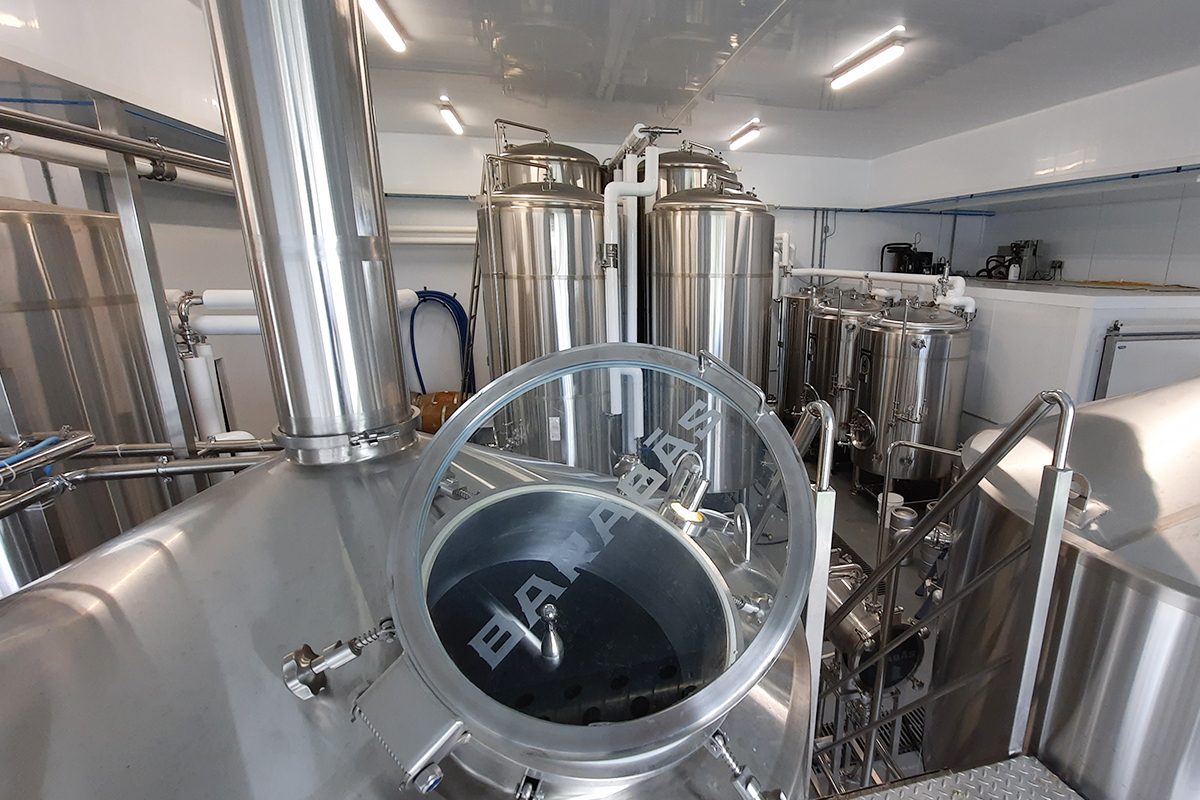
Budget Planning
Set Priorities
Identify Must-Have Equipment:
- Core components like the Mash Tun, Lauter Tun, Brew Kettle, and Fermenters are non-negotiable.
- Prioritize heating systems, cooling systems, and automated controls if they are critical to your brewing operations.
Evaluate Nice-to-Have Features:
- Optional features, such as decorative copper finishes or specialized hop dosing systems, may enhance the brewery’s branding or product differentiation but can be postponed if budget constraints arise.
Make Trade-offs Wisely:
- Decide whether you will prioritize automation, scalability, or aesthetics based on your business strategy and production goals.
Impact on Operations:
- Setting priorities ensures that your budget is allocated where it matters most, allowing you to build a brewhouse tailored to your needs without overspending.
Consider Leasing Options
Advantages of Leasing:
- Lower Initial Investment: Leasing requires smaller initial payments compared to buying equipment outright.
- Cash Flow Management: Fixed monthly payments make it easier to plan and manage your operating budget.
- Access to the Latest Technology: Leasing allows you to upgrade to more advanced equipment at the end of the lease term.
Key Considerations:
- Lease-to-Own Programs: Some providers offer lease agreements that let you purchase the equipment at the end of the term.
- Tax Benefits: Leasing payments may be tax-deductible, reducing the overall financial burden.
- Equipment Lifecycle: Ensure that the equipment you lease aligns with your brewery’s long-term production needs to avoid frequent upgrades.
Impact on Operations:
- Leasing helps breweries scale production quickly and affordably while conserving cash for other critical expenses like raw materials and marketing.
Calculate Long-Term ROI
Key ROI Factors:
- Operational Efficiency: Equipment with higher automation reduces labor costs and improves consistency.
- Energy Savings: Energy-efficient systems lower utility bills, contributing to long-term savings.
- Product Quality: High-quality equipment ensures consistent batches, boosting customer satisfaction and repeat business.
Projected Revenue Growth:
- Calculate how the equipment will help increase production capacity, enabling you to meet rising market demand.
- Factor in product diversification, such as the ability to create new beer styles, which can enhance revenue streams.
Total Cost of Ownership:
- Include maintenance, repairs, and potential upgrade costs in your ROI calculations to get an accurate picture of long-term profitability.
Impact on Operations:
- Calculating ROI ensures that your brewhouse investment aligns with your business objectives, helping you make informed decisions and achieve sustainable growth.
Choosing the Right Budget Strategy for Your Brewery
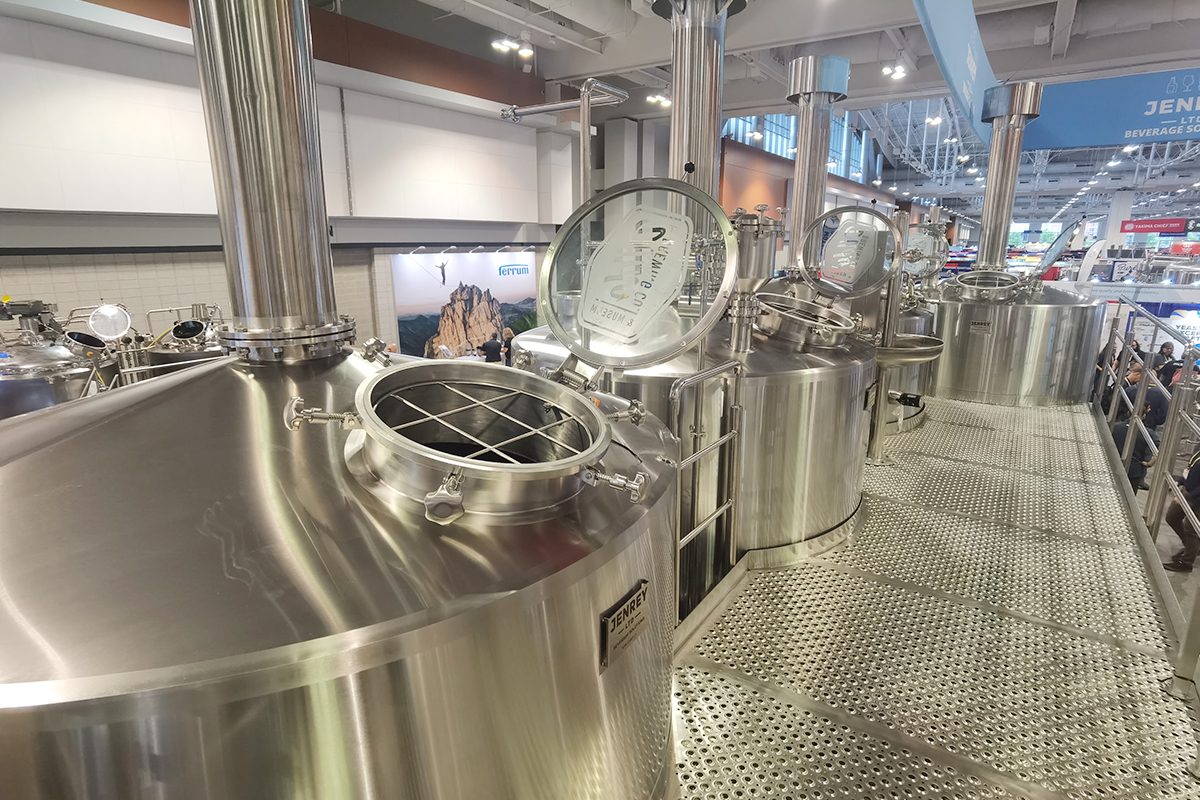
Choosing the Right Supplier
Comprehensive Product Range
Why It Matters:
- A comprehensive product range ensures compatibility between different components.
- It simplifies the procurement process by consolidating equipment purchases with one supplier.
- A wide range of options allows you to compare features, sizes, and configurations to find the best fit.
What to Look For:
- Availability of key equipment, including mash tuns, lauter tuns, brew kettles, whirlpools, hot and cold liquor tanks, and fermentation vessels.
- Specialized equipment for specific brewing techniques, such as hopbacks or decoction systems.
- Modular components that can be added as your brewery grows.
Custom Solutions
Why It Matters:
- Custom solutions allow for tailored configurations that optimize space and workflow.
- They enable you to incorporate advanced features, such as automation and specialized controls.
- Customized equipment supports product innovation, helping you stand out in a competitive market.
What to Look For:
- Flexibility to modify equipment specifications based on your needs.
- Consultation services to design layouts and recommend the best solutions for your brewery.
- Options for branding and aesthetic customization to enhance the brewery’s visual appeal.
After-Sales Support
Why It Matters:
- Equipment downtime can lead to production delays and financial losses.
- Regular maintenance ensures that equipment operates efficiently and extends its lifespan.
- Access to expert technicians reduces the time spent troubleshooting issues.
What to Look For:
- Comprehensive maintenance packages, including preventative care and emergency repairs.
- Easy access to spare parts and consumables.
- Technical support and training programs for your brewing team.
Turnkey Brewery Solutions
Why It Matters:
- Turnkey solutions simplify project management by consolidating all services with one provider.
- They reduce the risk of delays and errors during installation, ensuring a smooth startup.
- A turnkey approach guarantees that all equipment is integrated and functioning optimally.
What to Look For:
- Project management services to oversee every phase of setup, from design to commissioning.
- Seamless integration of equipment to ensure a cohesive brewing process.
- Assistance with permitting, compliance, and staff training to accelerate your brewery’s launch.
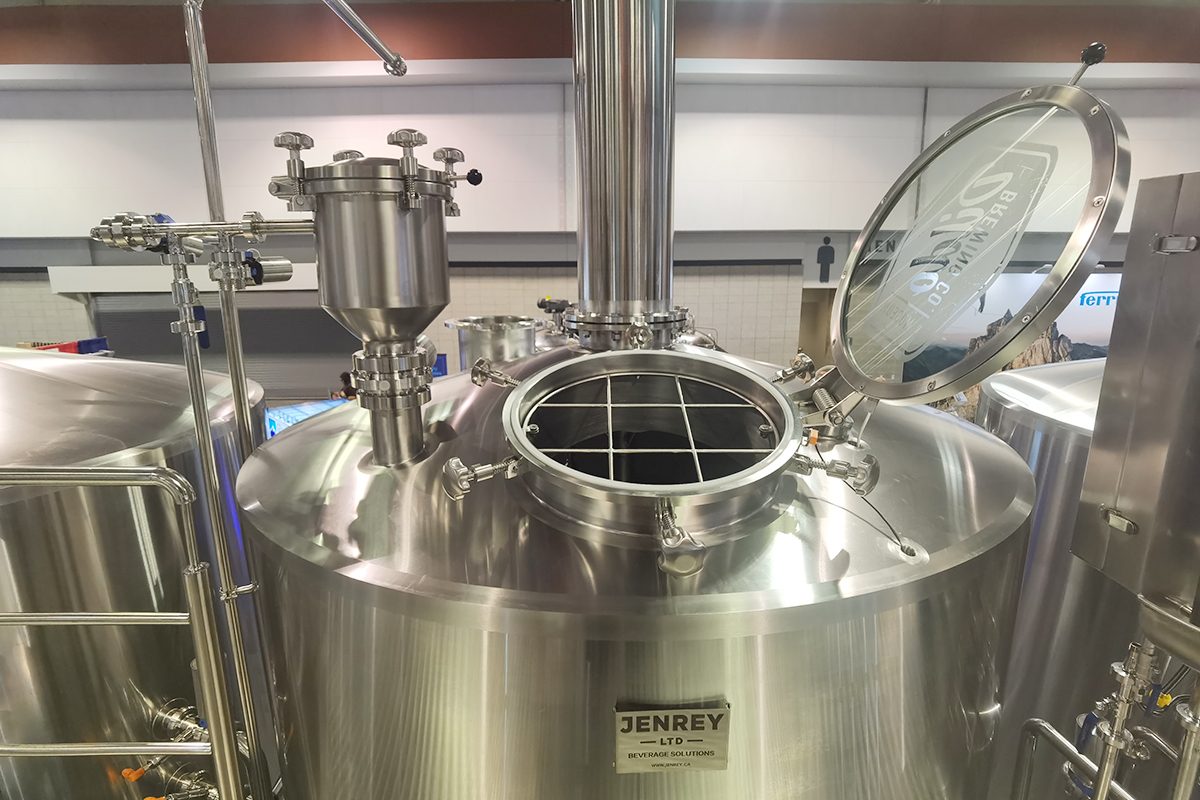
Compliance with Industry Standards and Regulations
Food Safety Standards
Key Standards to Consider:
- FDA (Food and Drug Administration) and USDA requirements in the U.S.
- HACCP (Hazard Analysis and Critical Control Points) certification for identifying and managing risks.
- EU Food Contact Materials Regulations for breweries operating in European markets.
Compliance Features to Look For:
- Food-Grade Materials: Stainless steel (grades 304 or 316) for corrosion resistance and hygiene.
- CIP Systems: Automated cleaning systems to maintain sanitary conditions.
- Smooth Finishes and Welds: Equipment with sanitary welds that prevent bacterial buildup.
Impact on Operations:
- Complying with food safety standards ensures your equipment meets regulatory requirements, safeguarding product quality and protecting your customers’ health.
Environmental Regulations
Key Areas of Focus:
- Wastewater Management: Regulations on the treatment and discharge of wastewater to prevent environmental contamination.
- Energy Efficiency Standards: Encouraging the use of energy-efficient equipment to reduce carbon emissions.
- Recycling and Waste Disposal: Requirements for recycling spent grain, packaging waste, and other by-products.
Compliance Features to Look For:
- Energy-Efficient Equipment: Systems with insulation and optimized heating to reduce energy consumption.
- Water Recovery Systems: Equipment that allows for the reuse of water in cleaning or cooling processes.
- Environmental Certifications: Look for suppliers with eco-friendly practices or certifications like ISO 14001.
Impact on Operations:
- Complying with environmental regulations not only reduces operational costs but also enhances your brewery’s reputation as a sustainable business.
Local Licensing Requirements
Common Licensing Requirements:
- Alcohol Production Licenses: Permits to brew, distribute, and sell alcohol in compliance with local laws.
- Health Department Inspections: Approval to ensure the brewery meets health and safety standards.
- Zoning Permits: Compliance with local zoning laws to confirm that the brewery operates in an approved area.
Compliance Features to Look For:
- Documentation and Certification Support: Work with suppliers that provide necessary certificates and documentation to facilitate the licensing process.
- Compliance-Ready Designs: Equipment layouts that meet space, ventilation, and sanitation requirements specified by local authorities.
- Project Management Assistance: Some suppliers offer support in navigating the licensing and permitting process.
Impact on Operations:
- Adhering to local licensing requirements ensures your brewery remains legally compliant, preventing costly shutdowns or penalties.
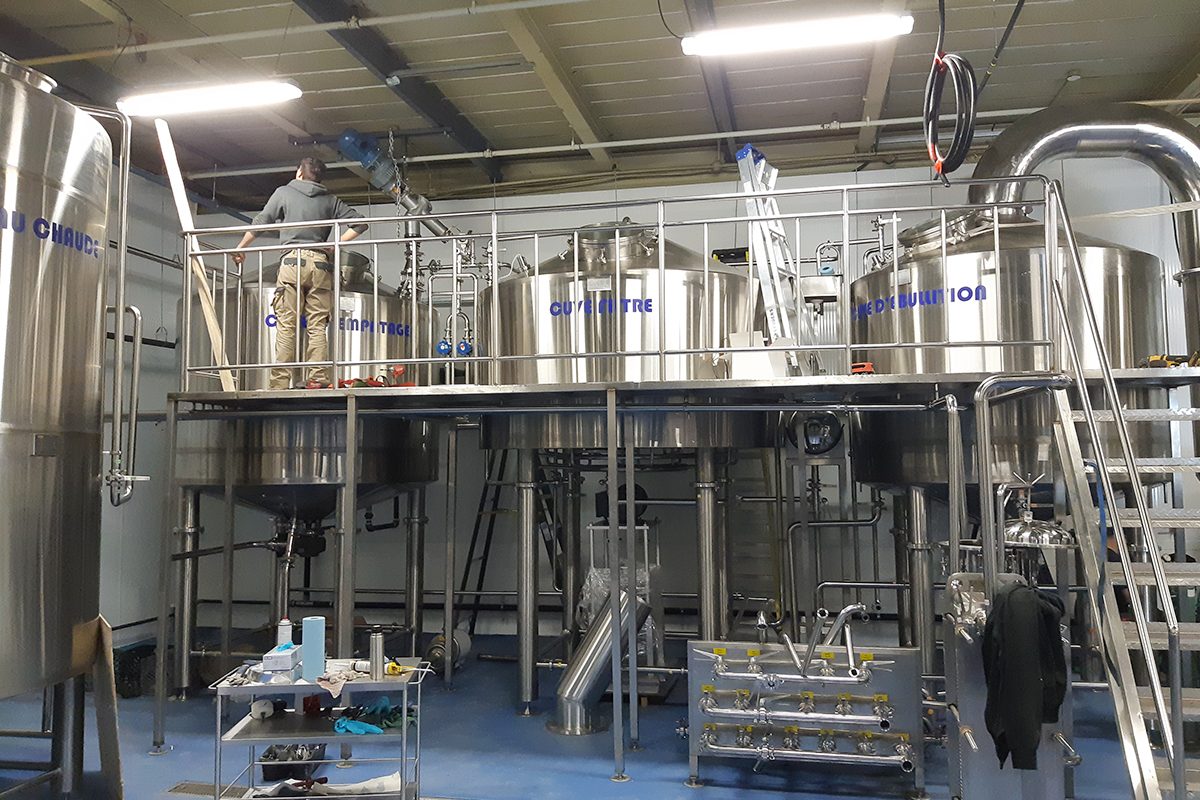
Summary
